wrestling / Columns
The Contentious Ten 07.25.11: Differences Between WWE and TNA

Hello, and welcome to The Contentious Ten! My name is Nick Bazar, and I thank you for clicking.
Bret Hart said that the main difference between WWE and TNA is Vince McMahon. That’s a very good point, but a little general. When compiling this list, my intention was to create some more specific discussion about the differences between WWE and TNA. What sets them apart- for better or worse- in the eyes of wrestling fans? I hope you find that both companies get a fair shake in this list, with both getting called out for their negatives and praised for their positives. And so, the Top Ten Differences Between WWE and TNA. ..
Presentationsize=6>
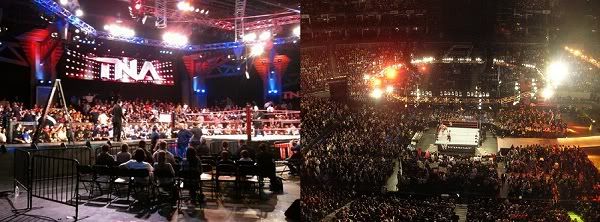
Let’s say you are a brand new fan to wrestling and are about to watch an episode of Raw and Impact Wrestling for the very first time. Raw opens and the first thing you see is a huge crowd, huge entrance set and an impressive fireworks display. Switch over to Impact Wrestling and the building is noticeable smaller and the set looks like a mini version of a WWE set. Right off the bat, without any other prior knowledge, you would most likely associate the “big time” with WWE. I have a friend who watches the WWE very casually. The other day, I showed him parts of an episode of Impact Wrestling, and the first question he asked me was, “How many people are in that audience? 100?” Now, I’m not saying in any way that the size of a crowd will determine the quality of a wrestling show. My point is that to even casual fans, TNA can come across as second-rate before even watching the matches or storylines play out. It’s a difference between the two companies, but a superficial one, so it only comes in at Number Ten.
Factionssize=6>
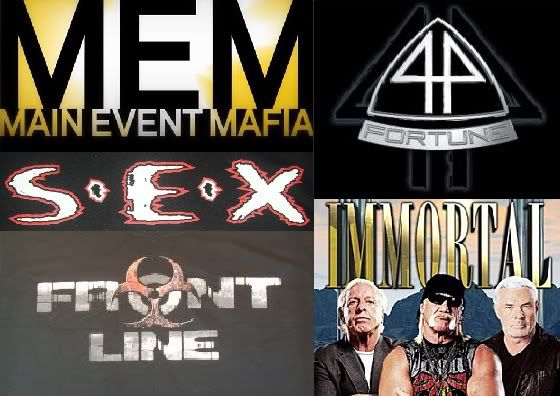
Does TNA love factions or what? It seems like at every point during their existence, there has been at least one faction that dominated storylines. In the beginning we had Sports Entertainment Xtreme and The New Church. Then came Planet Jarrett with Jeff Jarrett, Monty Brown and America’s Most Wanted. After that we had the Christian Coalition and the Angle Alliance. The next big faction was The Main Event Mafia who feuded with The Frontline and World Elite. Just recently, we’ve seen EV2.0, Fortune and of course, Immortal. WWE has had factions, sure, but never with the frequency that TNA has portrayed them with. Don’t get me wrong, factions can help to organize storylines and give a show a centralized theme and flow. Many times, TNA has used these factions to produce great television. Other times, they have overstayed their welcome. Either way, factions have been a mainstay in TNA since 2002, and the large number of them- along with the storylines that have stemmed from them- have separated the TNA product from WWE’s over the past nine years.
“Worked Shoots”size=6>

More specifically, which company has used “worked shoots” more effectively? I think the answer here has to be the WWE. For starters, the WWE has reserved worked shoots in their programming for very rare occasions. As a result, they usually tend to have a bigger impact; they become memorable moments that we remember for a long time. From Joey Styles’ angry, venting promo to CM Punk’s widely talked about Raw-ending speech, worked shoots in the WWE have usually received a positive reaction. On the other hand, TNA seems to use them more frequently, and as a result, many fans tend to roll their eyes whenever they pop up. Whether it was Vince Russo shooting on traditional wrestling in the early days of TNA, or Eric Bischoff and Hulk Hogan tearing up the scheduled Imapct card and taking over, worked shoots in TNA haven’t been as warmly received. To be honest, I think the WWE has proved that they can work, while TNA has made them cliché. Really, it’s all about timing and how often they are used.
Promo Worksize=6>
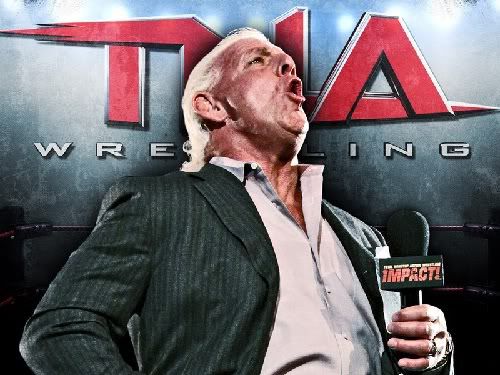
Promos- and the style in which they are captured- are very different in TNA and WWE. Believe it or not, for my taste, TNA has the upper hand in this department. TNA has some very good talkers- very good. Bully Ray, James Storm, Bobby Roode, Brian Kendrick, Jeff Jarrett, Ric Flair and Eric Bischoff (just to name a few) all have developed very distinct characters thanks in large part to their promo work. It doesn’t sound like the words these guys speak are coming from the same mind. That’s incredibly important in the wrestling business because if everybody on your program sounds the same, the quality starts to take a hit. Unfortunately, with the departures of Shawn Michaels, Chris Jericho, Edge and others, this is an issue that the WWE is currently facing. Apart from a few exceptions, all heels sound the same and all faces sound the same. Even a guy like Christian, who was once a very distinct character, has become somewhat neutered by his generic heel promos. Going back to TNA, even the way they capture certain promos makes them seem more real. All the backstage stuff where they catch up with a guy after a match or follow him to his locker room comes off as spontaneous, and their words come out with more emotion.
Tag Teamssize=6>
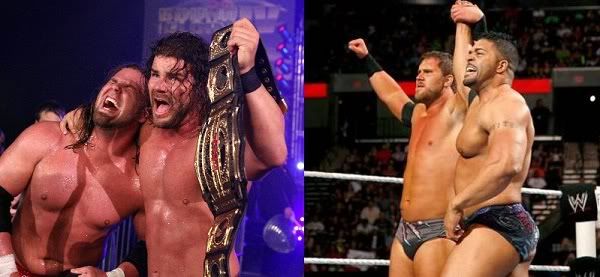
It’s pretty obvious that Vince McMahon doesn’t see tag team wrestling as an integral part of his programming. If he has great tag teams on his roster that people are getting behind (i.e., the late 90s-early 00s), awesome. If he doesn’t, then no big deal. When a competing wrestling company- namely, TNA- notices that nonchalant approach and mentality towards tag teams, it can create an opportunity for that company to set themselves apart. Luckily for TNA, they, for the most part, have jumped on that tag team weakness in WWE. All throughout their history, TNA has had a good number of good tag teams at one time carrying the division. From America’s Most Wanted, Triple X, Team Canada and The Naturals to Team 3D, LAX, Beer Money and The Motor City Machine Guns, TNA has always had a strong tag team division. It adds another dimension to the product, and gives TNA fans something they likely won’t get out of the WWE.
Programming Hourssize=6>

WWE has four hours of weekly television (six if you count internet shows like NXT and Superstars) while TNA has two (three if you count Xplosion). The result is TNA shows often coming across as chaotic and unorganized in an attempt to feature most of their roster with a limited amount of time, and WWE shows coming across with more fluidity and organization. More programming hours gives the WWE the added advantage of showcasing a much larger portion of their roster. Raw and Smackdown give the bigger names a platform to get their characters and storylines over while Superstars keeps the lower card guys busy and gives them an opportunity to possibly impress the right people and get called up to the main shows. You can let things breathe and sink in as opposed to moving from one thing to the next, one after the other. A big issue with Impact Wrestling is that the subtleties are often lost in the big waves of different characters and storylines. The impact of big developments like the crowning of a new champion or a heel/face turn is lessened when the viewer isn’t given a chance to process and appreciate the storytelling.
A Developmental Leaguesize=6>
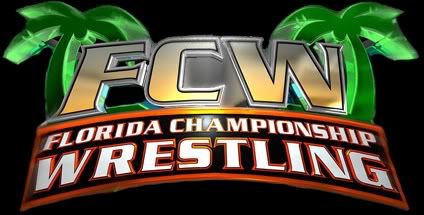
The WWE has an official developmental league with Florida Championship Wrestling. On the other hand, apart from occasionally bringing someone in from Team 3D’s training school, TNA doesn’t really have the equivalent of an FCW. The results of this are plentiful, and provide both positives and negatives for both companies. Having a developmental league allows the WWE to train and mold wrestlers specifically the way they want. It puts them in control of the in-ring and promo style they present to fans on television. The negative side of that is a bunch of cookie-cutter wrestlers who all wrestle the same way. However, every once in a while, someone can breakout and prove to be a diamond in the rough who has the potential to make the company a lot of money. TNA doesn’t have the same luxury. Instead, they bring in wrestlers who already know the craft and are set in their ways. The result is more variety with in-ring styles, which is a plus. On the downside, they don’t have a viable medium by which to bring up and develop their own wrestlers for the future.
The X-Divisionsize=6>
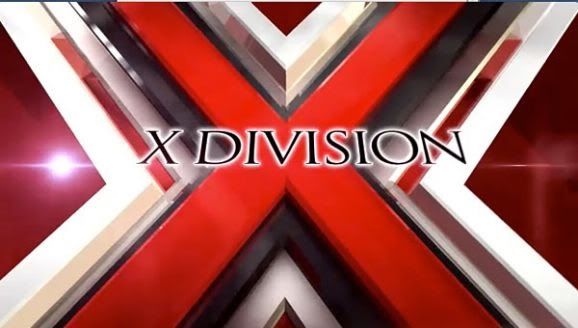
Since the beginning, TNA has used the X-Division as the main attraction by which to separate themselves from the WWE. Just recently, we saw how effective that could be with the phenomenal Destination X Pay-Per-View. Before that, fans were wowed by the Jerry Lynn/AJ Styles/Low Ki feud that introduced the division, and tuned in for the amazing matches Samoa Joe, Christopher Daniels and Styles were putting together on a weekly basis. Hell, even at its worst, the X-Division was more exciting than WWE’s now-defunct Cruiserweight division. While on the subject, at its worst, the X-Division was a bunch of very talented wrestlers without compelling characters. The personalities were lacking because the focus of the product shifted away from the X-Division, and the time invested in storylines for them was minimized. In spite of that, they still managed to put on some incredible matches that were never boring and exemplified the Total Nonstop Action name. Point being, the X-Division, even in its low points, provided fans with something they couldn’t see in the WWE. It has been one of the few identifiable aspects that has truly separated TNA from the WWE for years.
PG vs. TV-14size=6>

WWE’s PG rating has constantly been a major complaint of the product since it was implemented. However, if you look at it from a business standpoint, it makes a lot of sense. It opens up many more money-making sponsorships, and introduces a whole new generation to the world of wrestling. Instead of marketing themselves solely to the older diehard fans who, let’s be honest, will watch no matter what, they broaden their product to make it palatable to more people. Consequently, it will obviously be presented differently from TNA, who have a TV-14 show. TNA offers blood, cursing and at times, more “edgy” storylines. It appeals to an older male demographic. That’s not to say that one is better than the other- they are just different, and really, it’s for the best that way. Different programming attracts differing tastes and age groups which translates to more eyeballs watching professional wrestling.
Making Starssize=6>
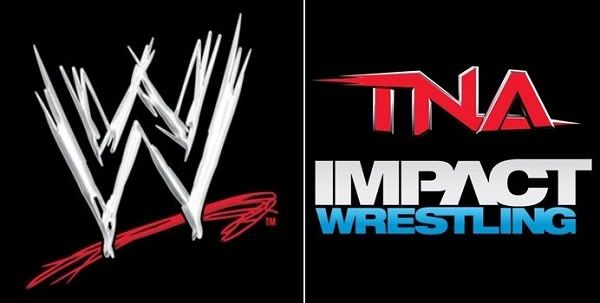
Of all the differences between the WWE and TNA that I have discussed, perhaps none other is more important than this one. WWE knows how to make a star in wrestling, and TNA doesn’t. Despite countless opportunities to make someone a name in this business, TNA has dropped the ball time after time. They have constantly had to rely on wrestlers who have gained their popularity elsewhere to give their company some kind of boost. How many times have we heard of a “huge superstar acquisition”? How many TNA PPVs have depended on exciting potential buyers with the promise of a new major signing? It has all been in an attempt to cover the fact they have no confidence in their ability to excite fans with their own homegrown roster. What’s even more frustrating is the fact that they have had so many chances to elevate certain wrestlers. Prime example: Jay Lethal. What in the world happened to the apparent direction they had with his character? Last Fall, he was coming off a huge Summer where he had multiple face-to-face confrontations with Ric Flair which eventually led to scoring a PPV victory over the Nature Boy. A few months later, he was let go. Why invest that time into someone if you have no real confidence in their ability to be a name in wrestling? Just recently we had Gunner. They gave him some big wins over some big names in the span of about a month, but now, he’s back to being “just another guy.” The only real example of someone becoming a name thanks to TNA is AJ Styles, but even that is debatable considering their up-and-down treatment of his character throughout the years. Meanwhile, the WWE has brought up Alberto Del Rio, The Miz, Sheamus and Alex Riley…in the past year. Before that, they found their next major superstar in a young John Cena, and saw that through to the end. Simply put, the ability to make wrestling stars is, in my opinion, the biggest difference between WWE and TNA.
More Trending Stories
- Corey Graves Comments on Move Back To WWE NXT Booth, Says He Was Told He Wasn’t ‘Famous Enough’ for Main Roster
- Vince McMahon’s Lawyer Issues Statement On Janel Grant’s Status Conference Request, Files Response
- Details On Penta’s WWE Raw Debut, Triple H Comments On Arrival
- Ted DiBiase Says Ultimate Warrior Would’ve Had No Success Without Great Wrestlers Leading Him In The Ring







